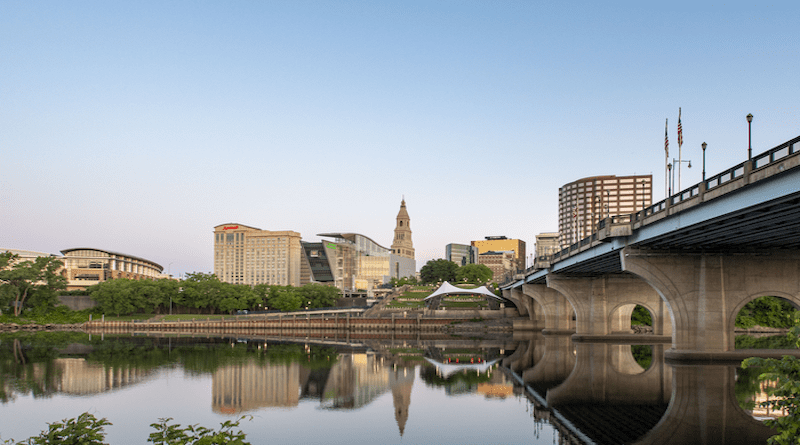Lack Of Ecosystem Services Corresponds To Non-White Areas
Making urban environments greener and giving residents greater access to nature is an increasing focus for municipalities across the country. But all too often, these efforts do not take into consideration how communities of color remain excluded from what nature has to offer.
In a recent publication in Landscapes and Urban Planning, Mayra Rodríguez González, assistant extension educator of urban and community forestry in the College of Agriculture, Health and Natural Resources, found that people of color are inversely linked to high amounts of ecosystem services.
“We’re all aiming for greener and more resilient cities,” Rodríguez says. “But what is a resilient city if its community members and residents are not equitably resilient as well? We want to make sure we reach equitable resilience.”
Rodríguez collaborated with Cloutier Professor of Forestry, Robert “Bob” Fahey in the UConn Department of Natural Resources and the Environment, and professors Bryan Pijanowski and Brady Hardiman at Purdue University, where Rodríguez did her graduate work.
Ecosystem services are the goods humans obtain from nature to improve quality of life, like access to fresh water or clean air. Ecosystem services can also include factors like not living in a flood zone or areas exposed to extreme heat.
“Nature, when properly managed allows us to have a higher quality of life,” Rodríguez says.
Access to ecosystem services is often very unevenly distributed. In her paper, Rodríguez defines ecosystem service “hot” and “cold” spots.
A “hot spot” is a mapped area with at least five ecosystem services provided in high amounts, defined as the top 20th percentile for that service. Rodríguez defined “cold spots” as areas with no ecosystem services within that top 20th percentile.
Rodríguez’s paper enters a discussion about how to plan urban areas to make them more resilient, especially in the face of climate change.
“Having a diversity of ecosystem services makes a city more resilient,” Rodríguez says.
Further, Rodríguez’s research reinforced the connection between areas where more people of color live and ecosystem services cold spots.
After identifying this correlation, Rodríguez looked to see if there were any publicly managed lands in areas that could be strategically enhanced to provide greater access to ecosystem services for historically marginalized groups, including Black and Latinx communities.
However, the areas with the highest number of ecosystem services were conserved, publicly managed lands, which tend to overlap with predominantly white, higher-income neighborhoods.
“Although conservation and managed land throughout the region is incredibly valuable, it’s not going to drastically improve access to nature for those populations that have been marginalized,” Rodríguez says.
Rodríguez also created a policy brief for the Gund Institute for the Environment including her research and other studies on the topic of land management and equity. In the brief, Rodríguez recommends obtaining land for restoration, conservation, and management in areas where diverse communities to increase access and equity.
“That really speaks towards being much more creative in how we’re adopting spaces for us to purposely ‘green,’ make more accessible to all community members because they could then have equitable access,” Rodríguez says. That said, Rodriguez also advocates for caution on how poorly planned greening efforts can lead to green gentrification.
A fundamental piece of this work, Rodríguez says, is including community members in the conversation and actually listening to them. Marginalized communities may distrust or be unaware of these public programs, and they may face language barriers if diversity isn’t made a central priority.
Some of Rodríguez’s upcoming work will share findings from a large-scale regional survey about supply and demand for ecosystem services. For example, urban residents are more interested in services related to flood prevention while rural residents are most concerned about freshwater access for irrigation since those are issues that they face most often.
“We want to make sure the communities feel this is for them,” Rodríguez says.

